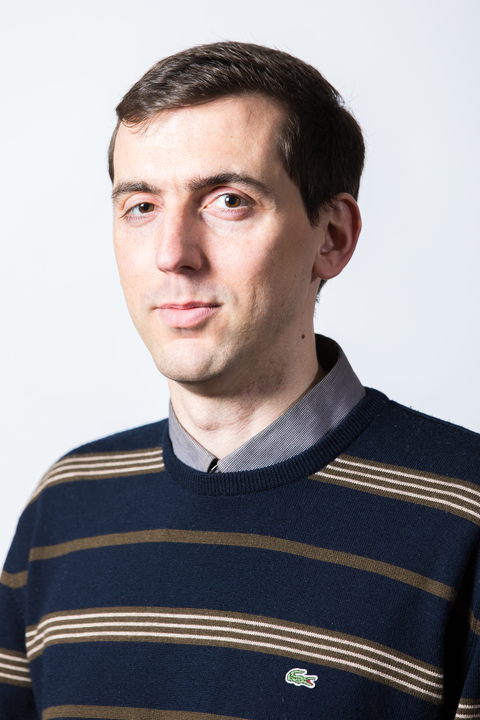
Civil and Environmental Engineering

- MSc Structural Engineering, National Technical University of Athens, 2004
- PhD Mechanics, National Technical University of Athens, 2008
- MEng Civil Engineering, National Technical University of Athens, 2002
Fellow of the Higher Education Academy
- The Finite Elemenent Method
- Soil Mechanics
- Geotechnical Engineering
- Engineering Mathematics
- Mechanics of generalised continua
- Micromechanics of materials
- Computational Mechanics
- Mechanics of geomaterials
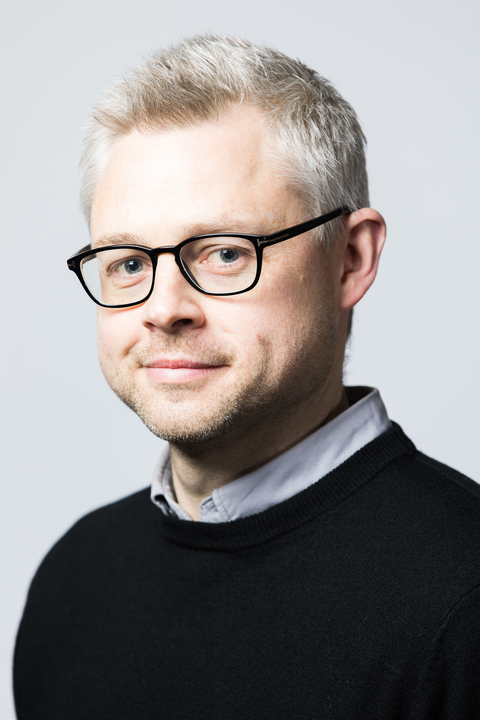
- PhD, Structural Engineering, Queen's University (Canada), 2003
- MSc (Eng), Structural Engineering, Queen's University (Canada), 1999
- BEng, Civil Engineering and Applied Mechanics, McGill University, 1997
Engineering Education
I have an ongoing interest in improving student ownership of and engagement in education in engineering, and have been involved in various engineering design, professional skills development, and curriculum reform initiatives.
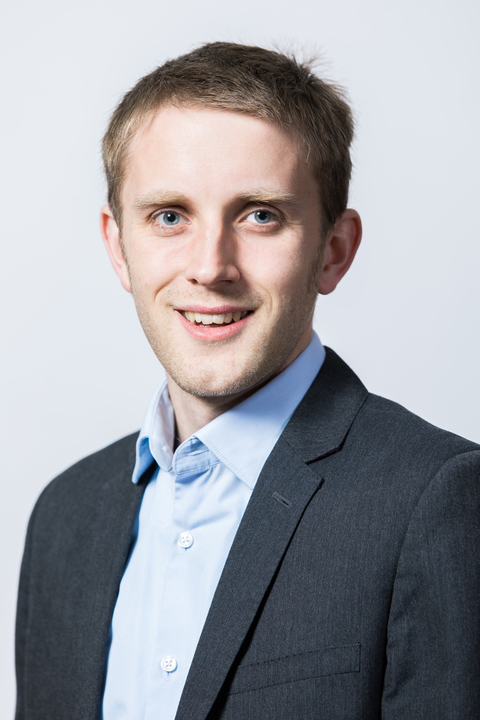
Dr Angus Law is a Lecturer in Fire Safety Engineering; he has previous held positions as a Lecturer at the Univeristy of Queensland (Australia), and as an Engineer at Ove Arup and Partners (UK).
Angus' interests are around developing design methods for use in industry, and ensuring that pratitioners have the necessary skills and knowledge to be able to impliment fire engineering designs safely and effectively.
Angus is currently invovled in reserach projects relating to cladding fires, engineered timber buidlings, and societal aspects of regulation.
PhD in Fire Safety Engineering, School of Engineering, University of Edinburgh (2010).
MEng Civil Engineering, 1st Class, University of Edinburgh (2007).
Dr Law is a Chartered Engineer (CEng) with the Institution of Fire Engineers (MIFireE).
Dr Law's current teaching roles include:
- Course organiser and primary lecturer in the first year programme's Civil Engineering 1;
- Course organiser and lecture in the honours class - Structural Design for Fire Safety 5.
Dr Law also assists in the delivery of the second year's Surveying Field Trip.
Previous teaching roles have included: Fire Engineering Design: Solutions for Implicit Safety; Introduction to Project Management; and Construction Engineering Management.

The Chair of Future Infrastructure is a new post designed to help policymakers address large-scale challenges in transport and utilities. Professor Masterton will oversee a Centre for Future Infrastructure which will draw upon world-leading expertise in fire safety and structural engineering, granular materials, railway engineering, non-destructive testing and large-scale data acquisition and analysis. Professor Masterton will embark on research to aid decision-making on appropriate infrastructure projects. He will also apply his industry experience to direct research into safe and successful project delivery. He also hopes to study infrastructure in Scotland’s urban and rural mixed economy, as a model to help to address problems created by world class cities in other less populated countries.
Background Experience
Until 2015, Professor Masterton was Vice-President of Jacobs Engineering. He is a past president of the Institution of Civil Engineers, past president of the Institution of Engineers and Shipbuilders in Scotland, former chairman of the Construction Industry Council, former Vice Chairman of the Royal Commission on the Ancient and Historical Monuments of Scotland, and founder and current Chairman of the Scottish Engineering Hall of Fame. Professor Masterton was the UK Government's project representative on the £15bn Crossrail development in London – Europe’s largest construction project to date. Recently, he was appointed a member of the Independent Assurance Panel for the HS2 high-speed rail link. Professor Masterton brings more than 35 years of industry experience and leadership of major infrastructure design, construction and commissioning to his new post.
- BSc, BA, MSc, DIC
- FREng, FRSE, FICE, FIStructE, FIES, MCIWEM
- OBE, HonDEng, HonDTech
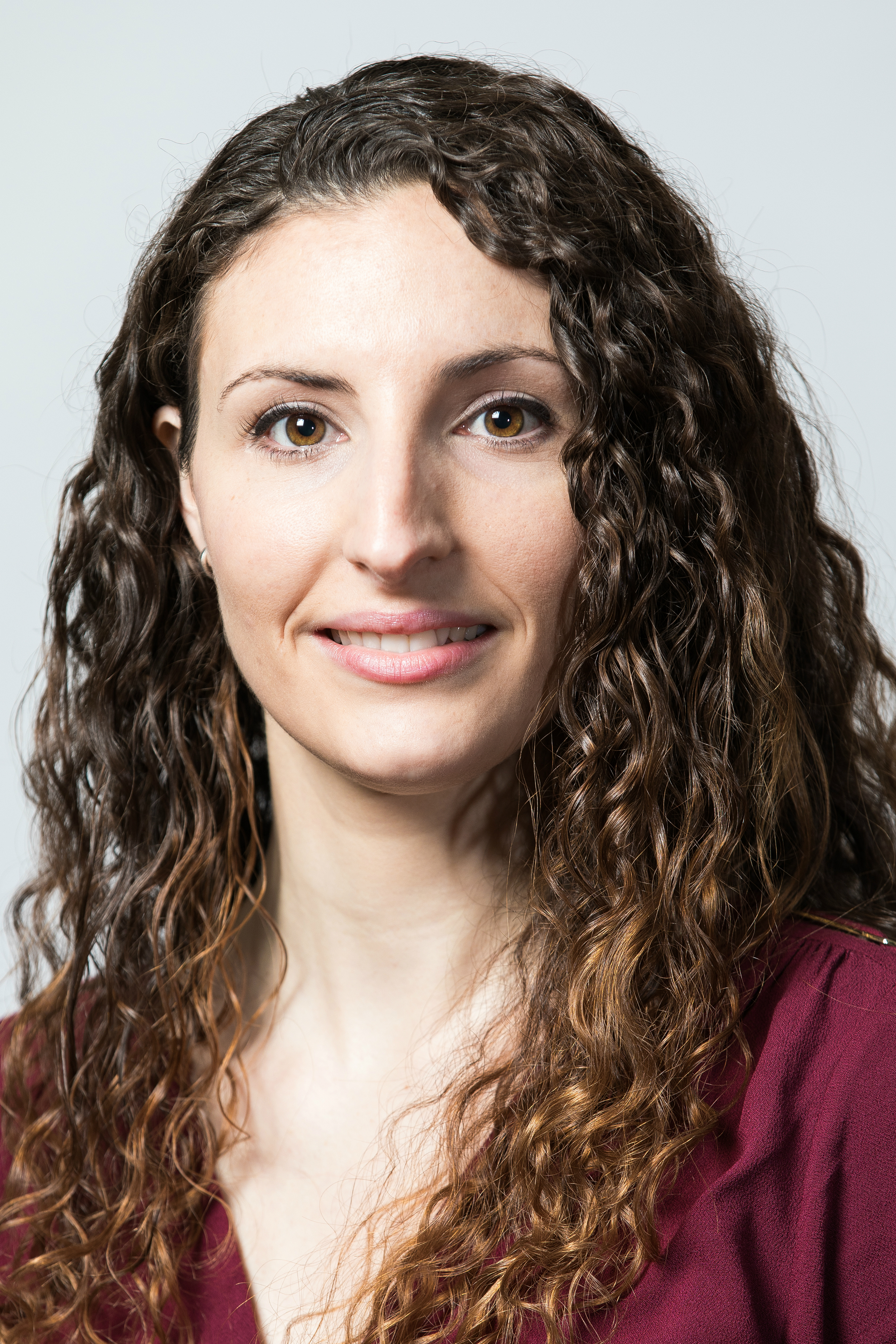
I am a Senior Lecturer in Ocean Observation. My research focuses on the use of remote sensing to study water, energy and environmental problems. In particular, I am interested in using multi and hyperspectral satellite imagery, in situ data, and machine learning techniques to investigate processes modelling the coastal environment. I also work on the application of satellite data to reduce the cost of marine renewable energy and better understand its environmental impact. I hold a PhD in Energy Systems & Dynamics of Biogeochemical Flows. I am a Turing Fellow of the Alan Turing Institute, a Fellow of the Higher Education Academy (FHEA), and a Chartered Engineer (CEng MICE). I am a certified commercial drone pilot (Civil Aviation Authority A2 CofC and GVC).
Research
I lead the Coastal and Environmental Remote Sensing Group (CEReS) at the School of Engineering. We study topics involving remote sensing of the coastal ocean, marine renewables and coastal engineering. Have a look at our work in the section Further Information below.
I am the Principal Investigator and Director of the Failure Modes of Engineering (FeME) Network Plus. This project was awarded £2.2 million in 2025 by EPSRC. We focus on engineering solutions for climate change and biodiversity loss, and their impact on women, children and underrepresented communities. My interest in this area stems from the transformative potential of satellite data to address global challenges—particularly in resource-constrained regions—and its role in advancing climate justice. You can find more about this project here. If you want to be involved, please get in touch!
You can find details on the research projects I am involved at present, and the ones I have worked on in the past in the link to "Research Publications" at the top of this page.
Leadership
I am the Deputy Director for Training of the UK Space Agency and NERC Centre for Satellite Data in Environmental Science, SENSE. I am also a co-investigator and part of the management team of the EPSRC and NERC Centre for Doctoral Training in Offshore Renewable Energy IDCORE.
My story so far
I started my studies in Ingenieria de Caminos, Canales y Puertos (MEng Civil & Environmental Engineering) at the University of Granada (Spain) in 2008, focusing on marine energy and coastal engineering. In 2013 I did an MSc in Environmental Hydraulics, specialised in aero-hydrodynamics.
I moved in 2014 to Oxford, where I worked as a Researcher in Coastal Structures at HR Wallingford. During that time, I developed my computational fluid dynamics skills, analysing the effect of storms in breakwaters and wave energy converters. In 2015 I was awarded a Talentia Fellowship to pursue a joint PhD at the University of Edinburgh in collaboration with the University of Granada.
From 2017, I worked at the University of Edinburgh as a Postdoctoral Research Associate in Marine Energy, where I studied the life cycle and techno-economics of marine energy converters, as well as the numerical modelling of ocean energy arrays. Moreover, I was a Work Package leader for a €20 million H2020 project from the European Commission working on numerical tools for the optimisation of tidal energy farms. In 2018, I was awarded a Chancellor's Fellowship in Data Driven Innovation focusing on satellite applications for the ocean. In 2023, I was promoted to Senior Lecturer.
- PgCert (Postgraduate Certificate) in Academic Practice, PgCAP. University of Edinburgh, 2021 - 2022.
- PhD Energy Systems & Dynamics of Biogeochemical Flows. University of Edinburgh and University of Granada (Spain), 2015 - 2017.
- MSc Environmental Hydraulics. Universities of Granada, Malaga and Cordoba (Spain), 2013 - 2014.
- MEng Civil & Environmental Engineering (Ingenieria de Caminos, Canales y Puertos, 5 year degree). University of Granada (Spain), 2008 - 2013.
- CEng MICE, Chartered Engineer, Member of the Institution of Civil Engineers.
- FHEA, Fellow of the Higher Education Academy.
- Commercial Drone Pilot: A2 Certificate of Competency (A2CofC), and General Visual Line of Sights Certificate (GVC)
- Turing Fellow, The Alan Turing Institute.
- MASTS (Marine Alliance for Science and Technology for Scotland). Former member of the Marine Energy Forum Steering Group.
- IMarEST (Institute for Marine Engineering, Science & Technology). Former student member.
At undergraduate level:
- Coastal Engineering 5 (Course Organiser), 10 SCQF credits.
- Interdisciplinary Group Design Project 4 (Course Organiser), Potable Water Supply, 20 SCQF credits.
Past courses I have taught:
- At undergraduate level: Programming Skills for Engineers 2, 10 SCQF credits (2020-2022)
- At postgraduate level: SENSE CDT, Python code carpentry and Google Earth Engine workshop (40 taught hours) (2020-2024).
- Remote sensing of the ocean.
- Marine renewables.
- Coastal science and engineering.
- Machine learning applications.
CEReS - Coastal and Environmental Remote Sensing Group
Current members
- Penny Clarke, PhD student, SENSE CDT. Topic: Using remote sensing tools to study ocean health and whale strandings. 2021 - present. Co-supervised with British Antarctic Survey (Dr Jennifer Jackson).
- Anneke Sperling, PhD student, SENSE CDT. Topic: Do ocean currents stick together? 2023 - present. Co-supervised with National Oceanography Centre (Dr Alejandra Sanchez-Franks).
- Liam McAlister, EngD student, IDCORE CDT. Topic: Offshore wind structures design sensitivity to metocean site conditions. 2024 - present. Co-supervised with University of Strathclyde, University of Exeter and SSE Renewables (Dr Alyona Naberezhnykh).
- Nishant Gaur, PhD student. Topic: Hydro-climatological extremes in the context of climate change. 2024-present. Co-supervised with Prof. Lindsay Beevers.
- Jasmine Relf, PhD student. Topic: Towards a resilient coast. Developing a continuous coastal resilience indicator for monitoring and adaptation in a changing climate. 2025-present. Co-supervised with JBA Consulting (Dr Demetra Cristaudo).
Past members
- Dr Simone Zen, Postdoctoral Research Associate. Topics:
- Assessment of the Omo river and delta using satellite data. 2019 - 2021.
- Supergen ORE Hub funded project Satellite Climate Observation for Offshore Renewable Energy Cost Reduction (SCORE). 2020 - 2021.
- Dr Segio Lopez-Dubon, Postdoctoral Marie Curie Fellow. Topic: Data-Driven Structural Testing for Tidal Energy. 2020 - 2025.
- Dr Emma McAllister, PhD. Topic: High-resolution satellite remote sensing of the coastal morphology. 2019 - 2024. Co-supervised with BGS (Dr Alessandro Novellino and Dr Andres Payo-Garcia) and Cefas (Dr Tony Dolphin).
- Dr Madjid Hadjal, PhD, Data Lab industrial PhD. Topic: Automated classification of ocean colour remote sensing for environmental monitoring and legislative compliance. 2018 - 2022. Co-supervisor, student based in University of Strathclyde (main supervisor Dr David McKee) in collaboration with Marine Scotland.
- Dr Solomon White, PhD student, SENSE CDT. Topic: High-resolution multispectral estimation of sea surface salinity and temperature. 2020 - 2024. Co-supervised with Cefas (Dr Tiago Silva).
- Valentina Gonzalez, MEng student. Topic: Offshore solar resource assessment in the North Sea using remote sensing. 2024-2025.
- Samantha Waugh, MEng student. Topic: Levelised Cost of Energy uncertainty estimation - A case study for offshore wind. 2024-2025.
- Ed Holt, PhD student, SENSE CDT. Topic: Investigating the potential for catastrophic collapse of Greenland's lake-terminating glacier margins. 2021 - 2025. Co-supervised with School of Geosciences (Prof. Peter Nienow).
- Melissa Cabrera Alfaro, MSc Geographical Information Science (School of Geosciences). Topic: The role of fishing refuge areas in the absorption of CO2. 2023-2024.
- Joe Marsh-Rossney, PhD student, guest team member (based in School of Physics and Astronomy).
- Katie McWilliams, MEng Civil Engineering student, final year thesis. Topic: Sea Surface Salinity From Satellite Data, Machine Learning And Numerical Models. 2021 - 2022.
- Clementine Frere, MEng Civil Engineering student, final year thesis. Topic: Feasibility Study Of Coastsnap In The Edinburgh Shores. 2020-2021.
- Hubert Gurs, MEng Structural Engineering with Architecture student, final year thesis. Topic: Feasibility Study Of Coastsnap In The Edinburgh Shores. 2020-2021.
- Nick Heaney, MEng Civil Engineering student, final year thesis. Topic: Coastsnap Assessment For Adaptation To Python. 2020-2021.
- Marcin Filinger, BEng Civil Engineering student, final year thesis. Topic: Flood risk assessment in Scotland using satellite data and numerical models. 2019-2020.
- Simone Speltoni, Visiting student, MSc thesis. Topic: Modelling the interaction between marine energy converters and the coast (Collaboration with the University of Trento, Italy). Awarded best MSc thesis. 2019.
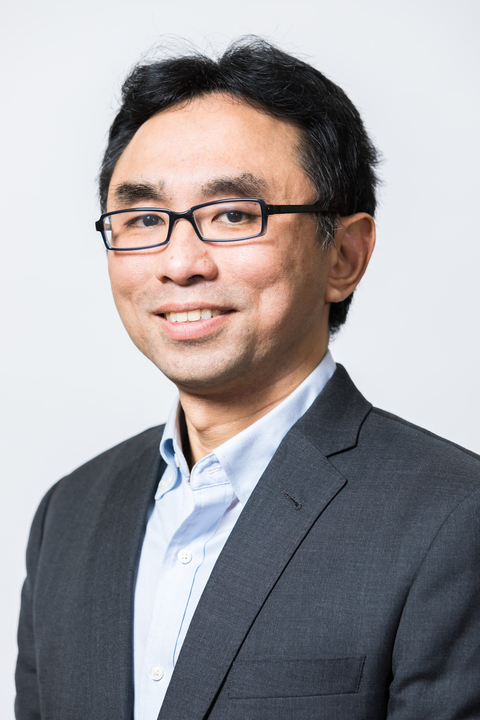
I am a Senior Lecturer in Civil Engineering. I spent years working as researcher, engineer and university academic in Malaysia and Japan before joining Edinburgh. I have amassed good experience in research and application in the fields of structures and construction materials, with specific focuses in structural repair and retrofit, low carbon cementitious materials, condition monitoring and non-destructive evaluation of structures.
BEng(Hons) in Civil Engieering (Universiti Sains Malaysia) MEngSc in Concrete Materials (Universiti Malaya) PhD in Civil Engineering (Osaka University)
- Chartered Member of Institution of Structural Engineers
- Fellow of Higher Education Academy
- Senior Member of International Union of Laboratories and Experts in Construction Materials, Systems and Structures (RILEM)
- Member of British Institute of Non-destructive Testing "Civil Engineering Group"
- Graduate Member of Board of Engineers Malaysia
- Detailed Design of Structures 3 CIVE09029 - Lecturer
- Structural Design Philosophy 3 CIVE09033 - Course Organiser and Lecturer
- Plastic Analysis of Frames and Slabs CIVE10003 - Course Organiser and Lecturer
- Concrete Structures 4 CIVE10029 - Course Organiser and Lecturer
- Interdisciplinary Group Design Project (Engineering) SCEE11010 - Lecturer
- Interdisciplinary Group Design Project 4 SCEE11014 - Course organiser and Lecturer
- Reinforced concrete structures modelling, analysis and design
- Acoustic emission monitoring and data analysis
- Low carbon cementitious composite materials development
- Elastic wave tomography development and implementation
- Structural appraisal, strengthening and retrofit
Accepting PhD projects.

Tom has been Chancellor's Fellow, Lecturer and Senior Lecturer (Associate Professor) in Civil Engineering at the University of Edinburgh since June 2017. Previously, he worked as a postdoctoral researcher at the Universities of Bath and Cambridge, and in engineering consultancy with White Young Green and Adams Kara Taylor, involved in civil and structural engineering design for projects ranging from a new sea lock in Swansea to the Masdar Institute building with Foster and Partners in Abu Dhabi. He studied for his PhD at the University of Bath in the BRE Centre for Innovative Construction Materials. He then worked as Postdoctoral Research Associate on the Leverhulme Trust sponsored Natural Material Innovation project at the University of Cambridge. Tom has been a chartered member of the Institution of Civil Engineers since 2010.
MEng Engineering Science (First Class), University of Oxford 2005
PhD University of Bath 2013
PGCert Teaching and Learning in Higher Education, University of Cambridge 2017
Tom has been a Chartered Engineer and Member of the Institution of Civil Engineers since 2010
Tom teaches structural mechanics, engineering materials and design courses.
Tom researches the use of wood and bamboo in structures, structural sensing and structural dynamics.
In wood and bamboo, he is interested in connection performance, including the stiffness and strength of dowel-type timber connections, and carpentry connections, including those made by computer numerical control (CNC) fabrication.
In structural sensing and structural dynamics, Tom is interested in what designers can learn by putting sensors on structures and measuring how they move under everyday loads.
